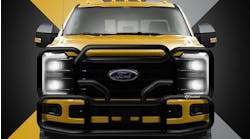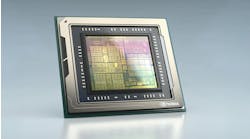EPA has reconsidered its stance against selective catalytic reduction (SCR) as a viable technology for on-highway diesel engines to meet stringent 2010 emissions standards, and sent a letter to manufacturers outlining its intent to certify SCR engines.
The letter outlines the criteria SCR-equipped vehicles must meet to obtain EPA certification. Much of the document addresses loopholes that end users could potentially exploit to operate vehicles while circumventing the emissions-related benefits. Specifically, the guidelines seek to ensure that SCR end users maintain the system's supply of reducing agent — typically urea — a consumable component of the emissions reduction technology.
EPA had previously resisted the certification of SCR-equipped vehicles for ‘10 because the system relies heavily on the end user filling “a second tank” of urea regularly. Just as fuel is consumed to keep an engine running, urea is consumed to produce the emissions benefits of SCR. In addition, EPA was concerned about developing a sufficient national infrastructure to provide end users with a convenient supply of urea or ammonia.
Allen Schaeffer, director of the Diesel Technology Forum, an advocacy group supporting diesel engine manufacturers, said the guidelines signal that EPA is warming up to SCR technology. “They've come to the recognition as we come closer to zero emissions, the conventional regulatory certification requirements in the past…may not work in the future,” Schaeffer told Fleet Owner.
A low-tank warning light, combined with “last-resort persuasive measures to induce users to replenish [the urea supply]” will be necessary for SCR-equipped vehicles to gain certification. Although EPA declined to require specific measures, it did note some no-start engine options or activation of a “limp home” mode if the SCR tank is too low.
EPA said it is “imperative” that SCR-equipped vehicles be able to detect that either urea or ammonia is in the tank — and not some other fluid, such as water. Possible mechanisms to ensure this are NOx sensors or urea sensors. According to the agency, the same control measures used to detect a low-tank situation would be appropriate for detecting that a non-urea fluid has filled the tank.
To ensure that end users have a convenient supply of urea, EPA wants it to be available at dealerships and truckstops, with a backup plan for users unable to access either.
“Some of the engine manufacturers already have outstanding repair and service networks,” Schaeffer said. “I think there's a good feeling there's already a decent infrastructure for supplying urea.”
EPA now requires that systems be designed to go 100,000 miles before emissions-related maintenance is required. This is far longer than what manufacturers say is possible if urea is used. EPA has indicated that it will approve of shorter maintenance intervals.
“The guidance suggested there'll be a need for rulemakings,” Schaeffer said. “I think now the ball is in the court of manufacturers to bring their requests for waivers [on the 100,000 mi. interval rule] to EPA.”
To access the EPA letter, go to www.epa.gov.


